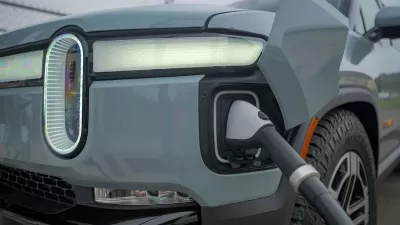People won't drive electric vehicles much differently than they drive gas powered vehicles. That means charging infrastructure will be needed in communities to supply electricity for many short drives.

The U.S. Department of Energy's Office of Energy Efficiency and Renewable Energy this month released an analysis of the nation's electric vehicle infrastructure, designed to establish expectations for the amount of infrastructure necessary to support both plug-in hybrid electric vehicles (PHEVs) and battery electric vehicles (BEVs).
The analysis is organized into four geographic areas: cities, towns, rural areas, and Interstate Highway System corridors.
Among the concerns addressed in each category of geographic area is the amount of non-residential direct current fast charging (DCFC) stations necessary to assuage the "range anxiety" of electric vehicle owners. "To ensure that BEV drivers in cities are never more than 3 miles from a DCFC station, approximately 4,900 DCFC stations are required across the United States," explains the Executive Summary of the report. "Providing the same level of coverage for towns would require approximately an additional 3,200 DCFC stations."
Comparatively, "[t]he analysis finds that approximately 400 corridor DCFC stations (spaced 70 miles apart on average) are required to provide convenient access to BEV drivers across the U.S. Interstate System." It doesn't require a calculator to figure out that community-based electric vehicle infrastructure will ne needed in much larger supply than infrastructure on the highways that connect communities.
FULL STORY: National Plug-In Electric Vehicle Infrastructure Analysis

Alabama: Trump Terminates Settlements for Black Communities Harmed By Raw Sewage
Trump deemed the landmark civil rights agreement “illegal DEI and environmental justice policy.”

Planetizen Federal Action Tracker
A weekly monitor of how Trump’s orders and actions are impacting planners and planning in America.

How Atlanta Built 7,000 Housing Units in 3 Years
The city’s comprehensive, neighborhood-focused housing strategy focuses on identifying properties and land that can be repurposed for housing and encouraging development in underserved neighborhoods.

In Both Crashes and Crime, Public Transportation is Far Safer than Driving
Contrary to popular assumptions, public transportation has far lower crash and crime rates than automobile travel. For safer communities, improve and encourage transit travel.

Report: Zoning Reforms Should Complement Nashville’s Ambitious Transit Plan
Without reform, restrictive zoning codes will limit the impact of the city’s planned transit expansion and could exclude some of the residents who depend on transit the most.

Judge Orders Release of Frozen IRA, IIJA Funding
The decision is a victory for environmental groups who charged that freezing funds for critical infrastructure and disaster response programs caused “real and irreparable harm” to communities.
Urban Design for Planners 1: Software Tools
This six-course series explores essential urban design concepts using open source software and equips planners with the tools they need to participate fully in the urban design process.
Planning for Universal Design
Learn the tools for implementing Universal Design in planning regulations.
Jessamine County Fiscal Court
Caltrans
Institute for Housing and Urban Development Studies (IHS)
City of Grandview
Harvard GSD Executive Education
Toledo-Lucas County Plan Commissions
Salt Lake City
NYU Wagner Graduate School of Public Service





























